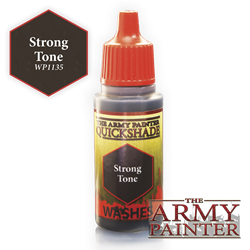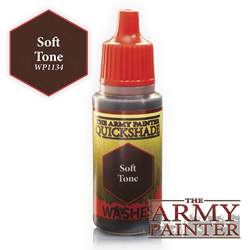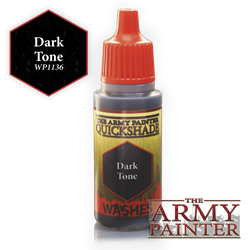As a modeller, but not necessarily an electrician, you may have read many 'how to' articles advising the use of a...
No products
Product successfully added to your shopping cart
There are 0 items in your cart. There is 1 item in your cart.
Search Tips
What are the different ways to apply washes when painting scale models?
As any seasoned modeller will tell you, using washes is an essential technique for adding depth, shading and realism to your scale models and miniatures. But have you experimented with different application methods beyond a standard brush-on wash? Let's review the pros and cons of brushing, dipping and spraying your washes.
The brush-on method
This is probably the most common and traditional way to apply a wash. Using a flat or round brush, you manually paint the wash into the recessed areas and along panel lines. The main advantages are precise control over placement and the ability to stipple the wash into tight spaces. However, it can be time-consuming on models with lots of nooks and crannies. There's also the risk of unsightly brush strokes or tide marks if not applied with a deft hand.
The dipping method
The dipping method involves...well...dipping your entire model into a bath of wash solution and letting capillary action do its magic. Favoured by wargaming painters, this technique quickly shades every crack and crevice. It's fast, low-effort and great for batch painting ranks of infantry models. That said, you do sacrifice some control over exactly where the shading ends up. It can also leave areas looking severely mucky if not properly rinsed and cleaned up afterwards.
Spraying
While less common than brushing or dipping, spraying offers another option for quickly applying an even wash coating across your model's surfaces. You'll need a spray bottle or an airbrush and the appropriate thinned wash mixture. Done well, spraying can effectively tone down a vibrant basecoat into a more natural, muted shade. However, you'll want to be careful about overspray and pooling - a spray starter set is recommended for best results. Some also argue that spraying doesn't provide the same control and placed shading as typical brush techniques.
No matter which method you use, practicing your wash application on test models is highly recommended before applying to your centrepiece project. Each has its own advantages for different types of models and modelling styles. Why not try out all three and find what works best for you?
Click here to receive the tips weekly in your mailbox. You can unsubscribe at any time.










